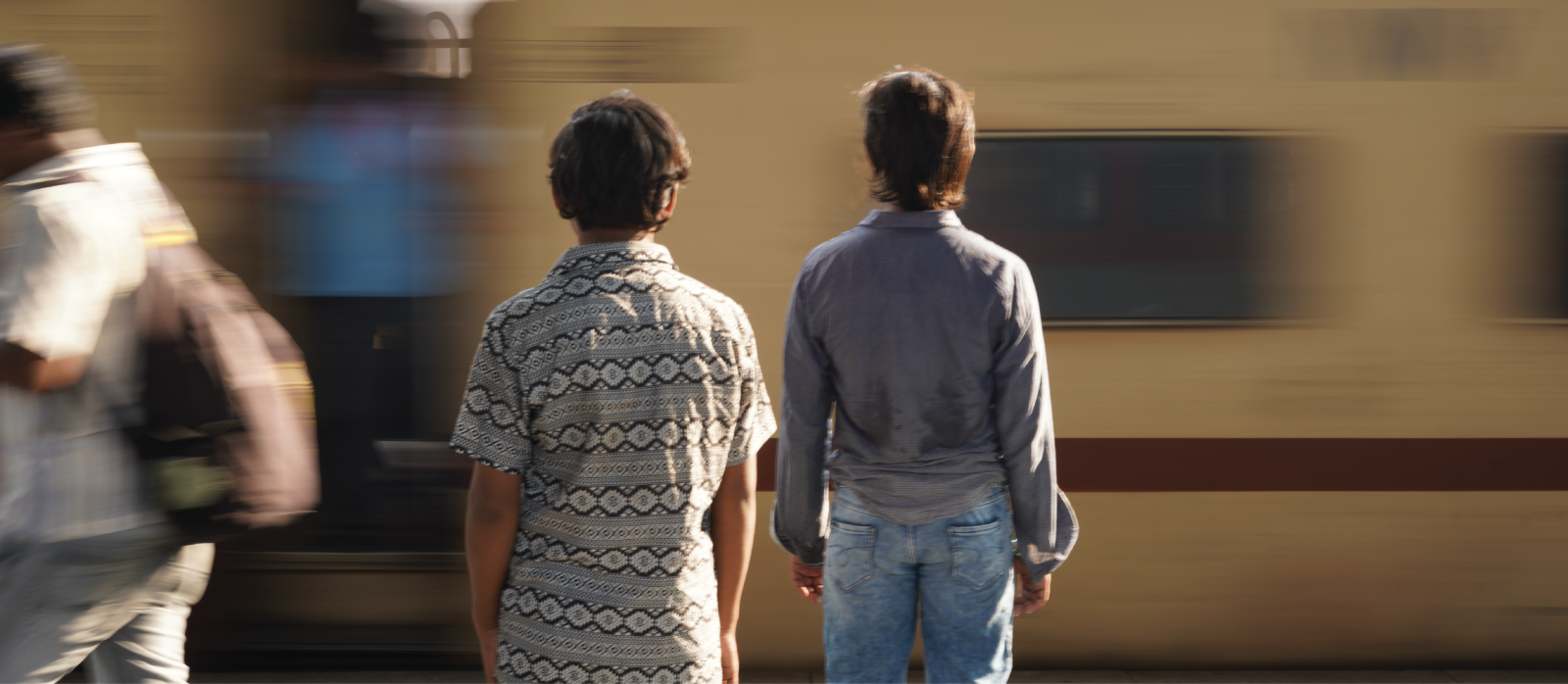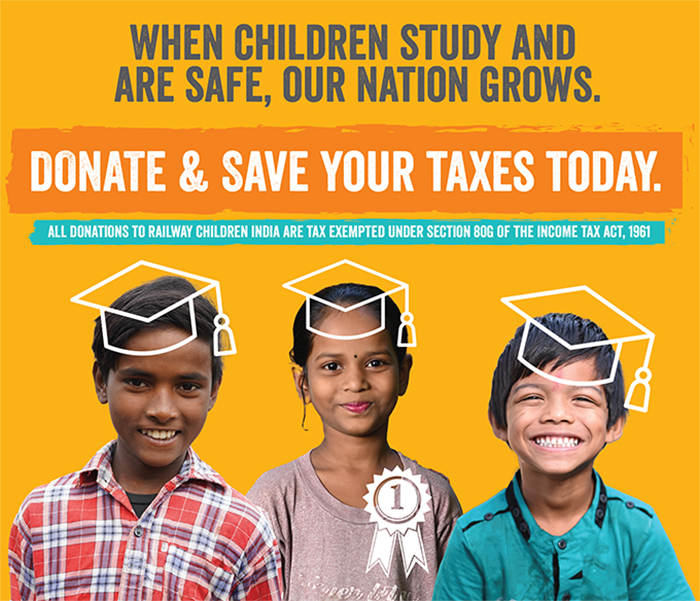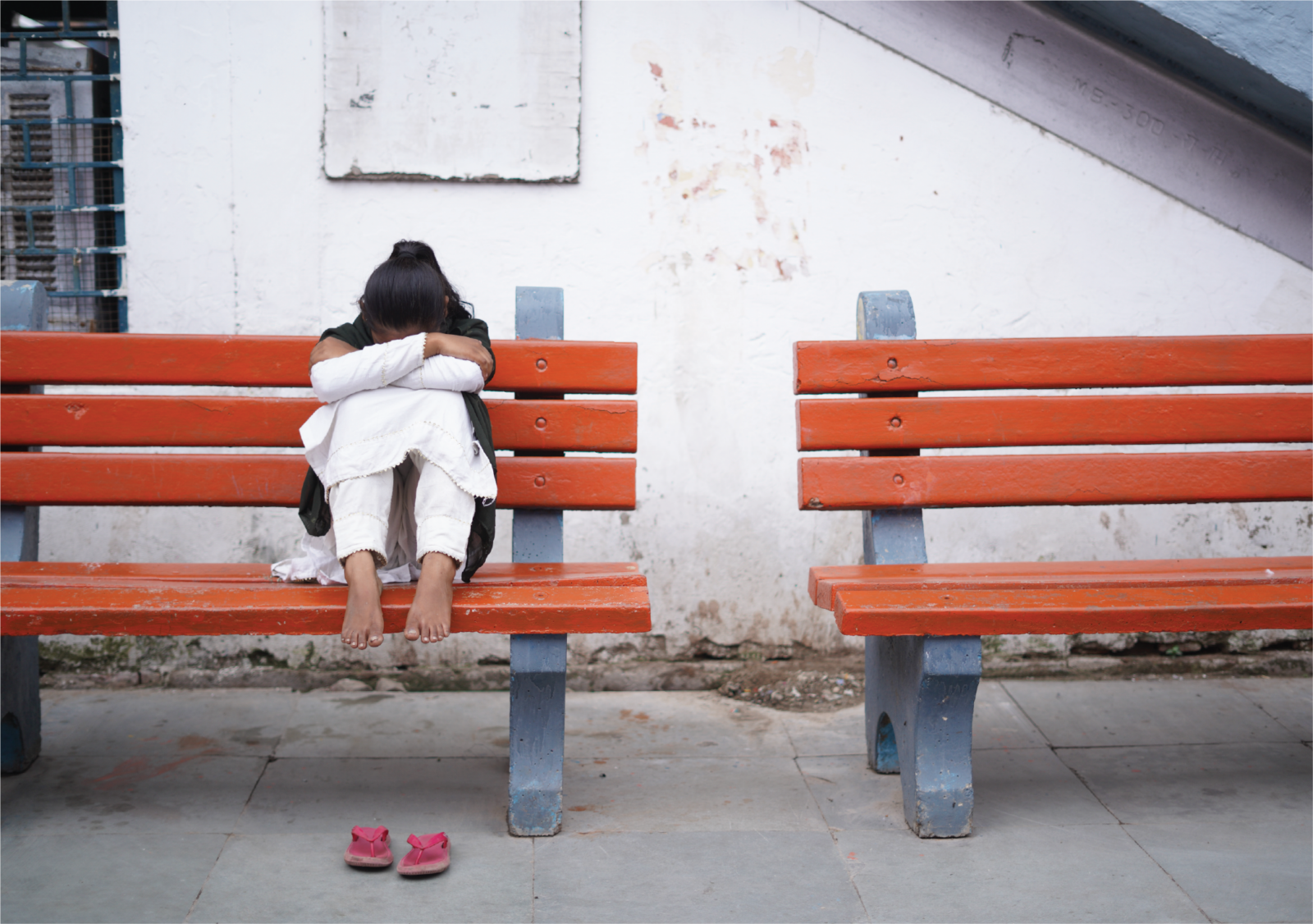It was a spring morning in March when our outreach team at Delhi Cantt Railway Station rescued Aman (name changed) when he was trembling in a desolate corner of the busy station, frightened of the sea of strangers before him. When asked how he ventured into the station, he narrated a heart-breaking tale of how being the eldest son and losing his father compelled him to drop out of school and contribute money to help his family survive the harsh financial crisis.
Derived from Railway Children India’s (RCI’s) extensive outreach across transport terminals and communities are stories like Aman’s. These stories educate us about the myriad complex causes that continue to push children to the streets. Let’s dig into some of these issues and learn how RCI conducts prevention and intervention in communities and transport terminals to protect children before they slip into a life on the streets.
1. Poverty
When securing the basic necessities of everyday life becomes a monumental task, families are forced to send their young children to work. The cruel work conditions, physical abuse, and inhuman working hours that await their children in bangle-making boutiques, garment workshops, tobacco factories, tanneries, farms, are not always known to every parent. Yet, in the face of poverty, they are left with little to no choice but to send their children away in the hope of securing one square meal for the family.
2. Trafficking
During a recent conversation, Mr Kishan Kumar, Project Coordinator at Anand Vihar Bus Terminal, shared a compelling story of how a bus conductor’s vigilance helped rescue two young girls from trafficking.
“One day, a conductor who regularly operates from Anand Vihar approached me with a sense of urgency. ‘Bhaiyya, vo do bacchiyon ko dekh lo jara, unke saath wali aurat sahi nahi lag rahi.’ (Please take a look at those two girls; the woman accompanying them does not look right to me.)
The conductor had been observing them since they boarded the bus and grew increasingly suspicious of the woman’s behaviour. As soon as they alighted, he rushed to inform our team. When we approached the trio, the woman fled, only to be caught later. The girls, frightened and confused, were rescued just in time. Further investigation revealed that the woman had a kidnapping case lodged against her, and the girls were indeed victims of a trafficking attempt.
Routinely, our outreach team members come across several cases where young girls are enticed into lucrative jobs or a fairy-tale future with partners in disguise. If not protected at transport hubs, these girls could find themselves in the dark alleys of cities.
3. Broken families
In addition to the hunt for a job or the harsh trap of trafficking, countless children also find themselves stranded at transport terminals for seemingly innocent reasons. “My father yelled at me.”; “I scored low marks in a test, and I was scared of my mother’s reaction.”; “I hate my sister; she gets all the attention of everyone.”
But belying these innocuous reasons is a singular uniting reason—broken families.
Lacking communication and filled with misunderstandings, several families have strained ties and unhappy hearts. While the elderly carry these sentiments callously and go about their day, young children, with their hormones driving their emotions, find it difficult to navigate life with these unresolved incidents. Without a second thought, they head out of their homes, with no destination in mind. All they know is they want to stay away from the environment at home, away from their parents who don’t understand their issues.
4. Abandonment
An extension of broken families is several cases of abandonment. From newborn babies to young girls of single parents, many children find their way to transport terminals after being abandoned by their parents/guardians. When the going gets tough for some underprivileged families, abandoning their children in the hope that they will find a better alternative than their own home seems to be the only option.
5. Urban Attraction & Peer Influence
Lastly, those familiar narratives of leaving home to see Delhi’s India Gate, Agra’s Taj Mahal or find a place in the Glitterati of Bollywood in Mumbai, remind us of the tremendous hold that peer influence and urban attraction have over impressionable young minds. Such is the allure, strengthened by repeated exposure on social media, that children follow their whims with no fear of the risks that await them at busy transport terminals.
Our mission in motion
RCI plays an active role in not only securing these terminals but also preventing potential slips in the cracks with wide-scale community work.
To begin with, our strong collaboration with the Indian Railways – Government Railway Police, Railway Protection Force and District Child Protection Unit allows us to cast a safety net with Child Help Desks, Child Help Group Meetings, and plenty of awareness activities that target crucial stakeholders, including porters, sanitation workers, ticket collectors, bus drivers and conductors. As a result, last year, our team successfully protected a total of 1363 children, comprising 1053 males and 310 females. Furthermore, we facilitated the reunification of 1255 children with their families.
In the communities, our Child Activity Centres are a haven for adolescents and parents alike, where routine activities are conducted for family strengthening. From providing a fertile ground for emerging peer leaders to conducting a 2-day residential family camp, our intervention in the community aims to prevent children from slipping to a life on the streets from the source.
28 years we began our work with the belief that ‘no child should ever have to live on the streets’…today we’ve made it our mission.






